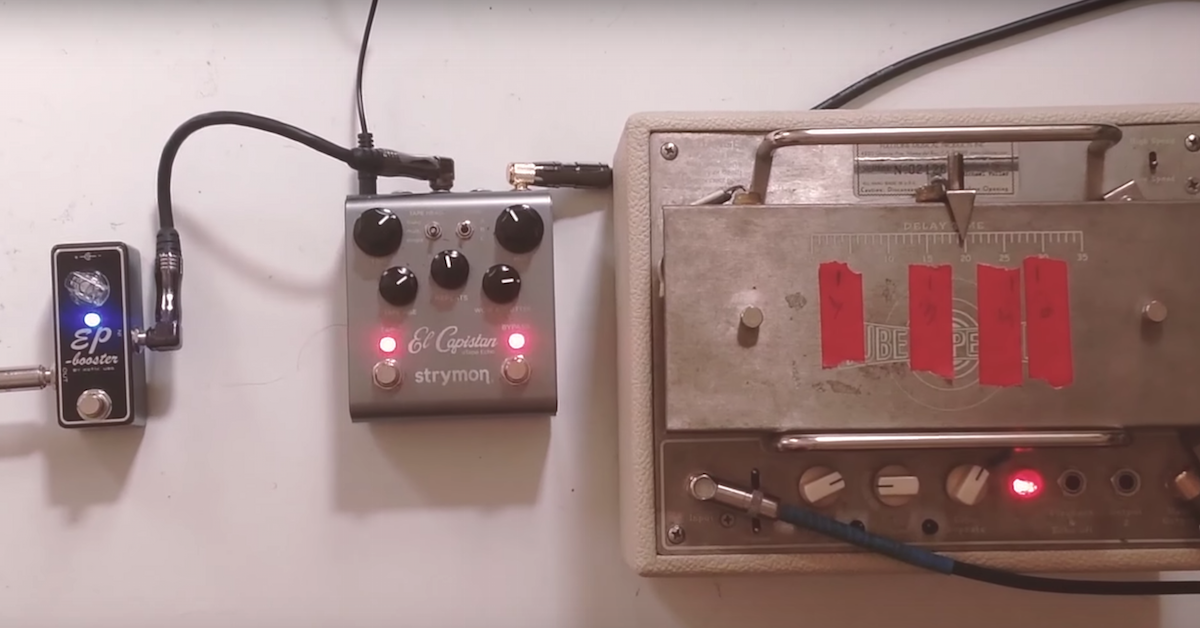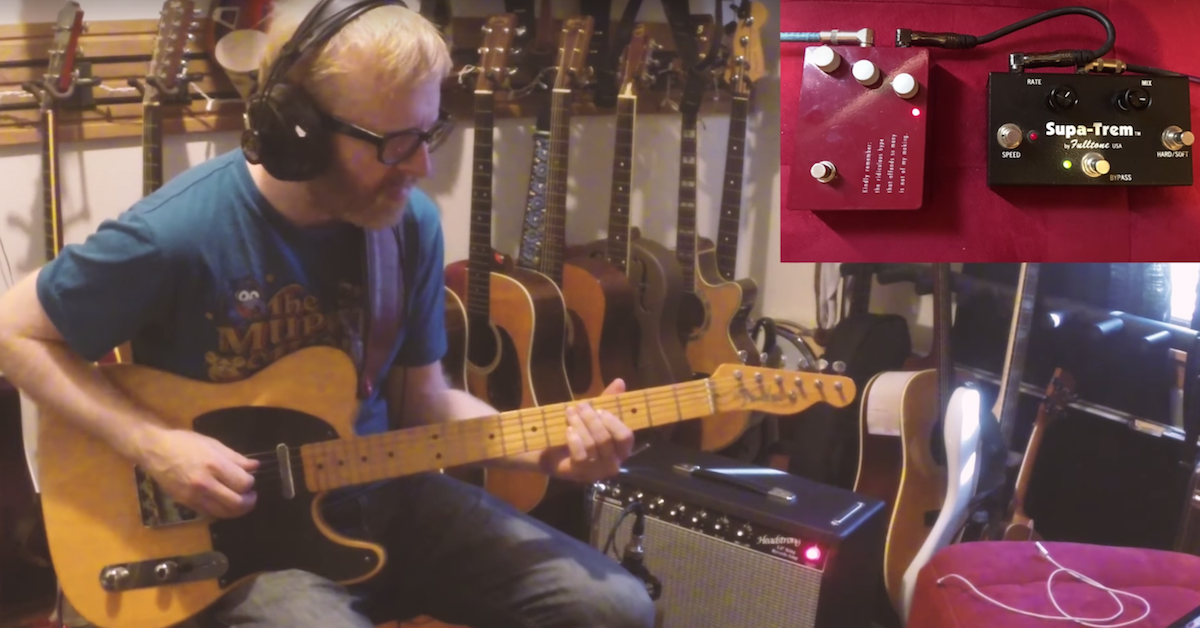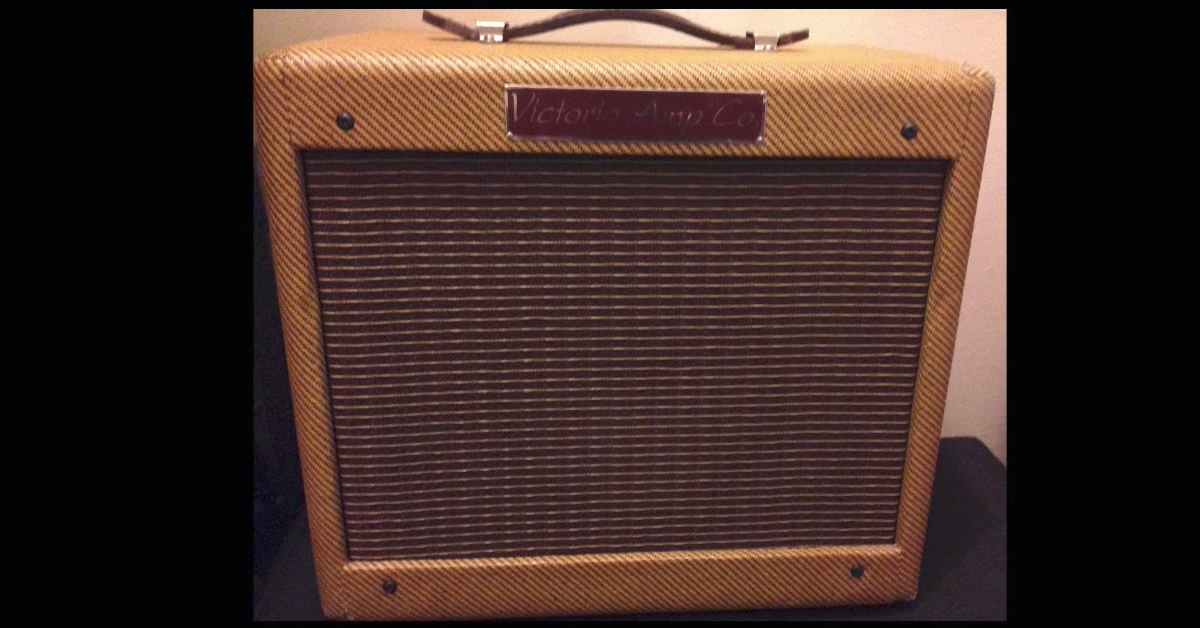The Anatomy of Eric Clapton’s Guitar Tone
Article Content
There’s been a lot of discussion about Eric Clapton’s tone. Many rumors have circulated over the years, especially concerning the early Blues Breaker records. Clapton’s tone is simpler than you may think. He rarely used much more than a wah, and contrary to speculation, he never used a treble booster or a fuzz.
Amps
Clapton worked his amps by pushing them to their limits. In John Mayall & the Blues Breakers, he was using a Marshall Bluesbreaker — a JTM-45 combo amp. The JTM-45 uses KT66 output tubes and a GZ34 rectifier tube, giving the amp about 35 watts of power. The combo version of the JTM-45 (Bluesbreaker) had an open-back cab with two 12” speakers. Closed-back cabs have more low end. Open-back cabs have a little more high-end.
The distortion you hear on the “Beano” record and Clapton’s other 1960s recordings is from the amp being cranked. The humbuckers on the various Gibson guitars he used in the Bluesbreakers/Cream era pushed the amp harder than single coils could — pushing it into more overdrive. This particular overdrive from the Bluesbreaker combo is often mistakenly attributed to a Dallas Arbiter Rangemaster treble booster. Despite rumors on the internet about Clapton using a Rangemaster, he says that he never did. This is confirmed by the recording engineer.
There is also no sign of one in any of the photos of the sessions. A Les Paul with ’50s wiring played straight into a Marshall 1962 model amp turned all the way up will deliver what many consider the elusive Clapton tone.
Guitar
Clapton’s guitar on the Beano record was a ’59 or ’60 Les Paul Standard. The exact year is debated. During the Cream era, he also used a ’64 SG and a ’64 ES-335. Both of these guitars also have humbucker pickups. See a trend here? I mentioned ’50s wiring. I find this to be really important to getting his “woman tone”.
With ’50s wiring on Gibson guitars, you retain more high-end as you roll back the volume. I also find that when you roll back the tone knob, these guitars sound more natural and less hyped. Modern wiring sounds more like a bass boost to me. It’s muddier. With ’50s wiring, you can roll back the tone knob and get more of that “honk”.
The side effect is that you lose a little volume. That’s never bothered me. I believe it also played a role in the gain staging of Clapton’s Marshalls. So, in short, a modern Les Paul wired to modern specs run into an old-school Marshall isn’t gonna get you the woman tone.
One important component in this tone is the Les Paul tone knob. The key is to roll it back. Not all the way, but maybe three quarters back. It not only cuts some of the highs, but also adds some honk.
Pickups
Pickups play a big role in the tone of this period. As I’ve said, Clapton’s Les Paul was either a ’59 or ’60. There are a few differences in the models from those two years, but one common thread is that the pickups were lower-output than are a lot of modern humbuckers.
This interaction of lower-output humbuckers into a Bluesbreaker is very important. Higher-output humbuckers not only result in more gain but also create a harsher tone. Lower-output humbuckers have a sweeter tone. It’s a simple chain, but every element is extremely important.
Pedals
Clapton’s only pedal during this period was a Vox Clyde McCoy Wah — often referred to as an Italian wah (Vox by then had moved production from California to Italy). The Vox wah sounds a bit different from the Dunlop (inventor of the wah-wah, in 1966). Its throw range is a little wider than the Dunlop Cry Baby.
Since Clapton played straight into the amp, we know the wah came before any gain staging. This is worth noting when using pedals to achieve gain. Make sure to place your wah before any drive pedals.
Recreating the Clapton Tone
You don’t need to own all vintage gear to recreate Clapton’s tone of this period. As with recreating any tone, you can only come so close. Because no matter what, you’ll always be missing one element: the original player. That being said, let’s run through some combinations to get you in the ballpark.
I do think the relationship between the guitar and amp must remain the same as Clapton’s. As much as I like pedals and the many options of overdrive that exist, they just don’t fully nail this tone.
As nice as it is to use a Marshall JTM-45 or Plexi, we can approximate that sound using a tweed amp. Early Marshall amps were based on Fender tweed amps — in particular, the tweed Bassman, which the first Marshalls were based on.
Volume
OK, here is a bit of truth. Volume is an integral part of this tone. Sorry, but you just have to push some air. It’s a combination of power tube saturation, preamp saturation and speaker breakup. If need be, you could use an amp attenuator like the Weber MASS 200. This will take the speaker breakup out of the equation. But for some environments, there isn’t another option.
The chemistry of the preamp, power tubes and speakers being pushed to their max creates a dynamic, searing tone. Many companies claim their pedals sound the same, but they don’t. A hard truth. This doesn’t mean a particular pedal sounds bad. It just means it doesn’t sound the same. I generally put the amp volume knob between 8 and 10. You can really feel the amp vibrating at these volumes.
Plugging a Gibson-style guitar with PAF-style pickups and ’50s wiring straight into the amp will give us a glorious tone. Keep in mind that the higher you turn the tone knobs on the amp, the more the amp saturates. All knobs up will yield more overdrive then cutting the EQ.
Mic
I would use a ribbon mic that’s not placed directly on the amp. The Beano tone is really a ’50s blues tone. A lot of it comes from the room. An SM57 straight on the cab won’t sound period-correct. Although there are a few photos with a close mic on the cab (most likely a few inches back), I would try at least six to eight inches. There is a lot of bleed into other mics in the room.
If you have a big room, set up some room mics and blend a healthy amount in. If you don’t have an ideal room, you can use the UAD Ocean Way.
Regarding preamps and compression — keep it old-school. Helios or a UA 610 are both great mic preamps from the time. For compressors, think LA-2A or a Fairchild. I like ribbon mics or tube condensers for this application. I don’t usually reach for a dynamic mic for this era of tone.
Caps
There’s been a lot of debate about whether capacitors (caps) influence guitar tone. Some claim they have no impact. I believe they do. Not everyone hears the change. But for those of us with dog ears, we can hear it clearly.
One ingredient of late ’50s Les Pauls were Bumblebee paper-in-oil caps. These caps tend to be a little warmer, with slightly softer transients than Orange Drop caps. It may seem insignificant, but the right caps can really help impart a vintage vibe to your Gibson.
You can basically vintage-ify a modern Les Paul to sound incredibly close to a vintage one with the correct wiring and caps. And if you really want to be thorough about it, replace the stop tailpiece with an aluminum one. They were all aluminum during this period. Each of these elements has a cumulative effect.
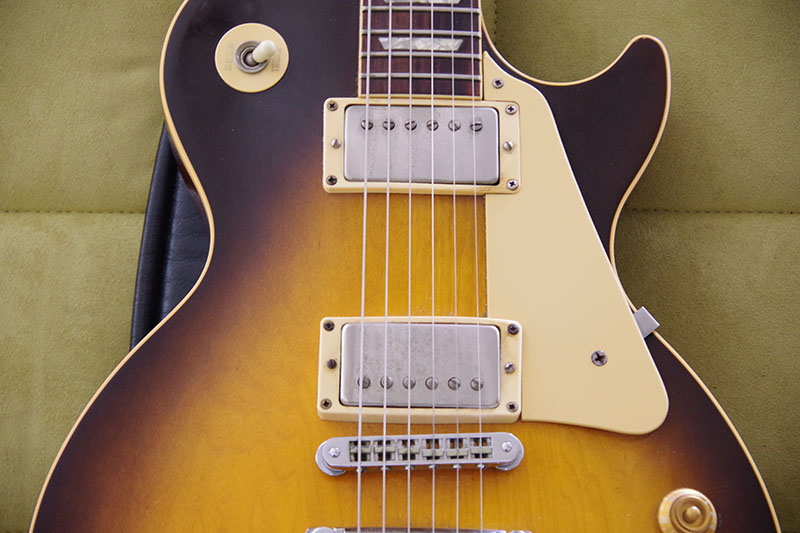
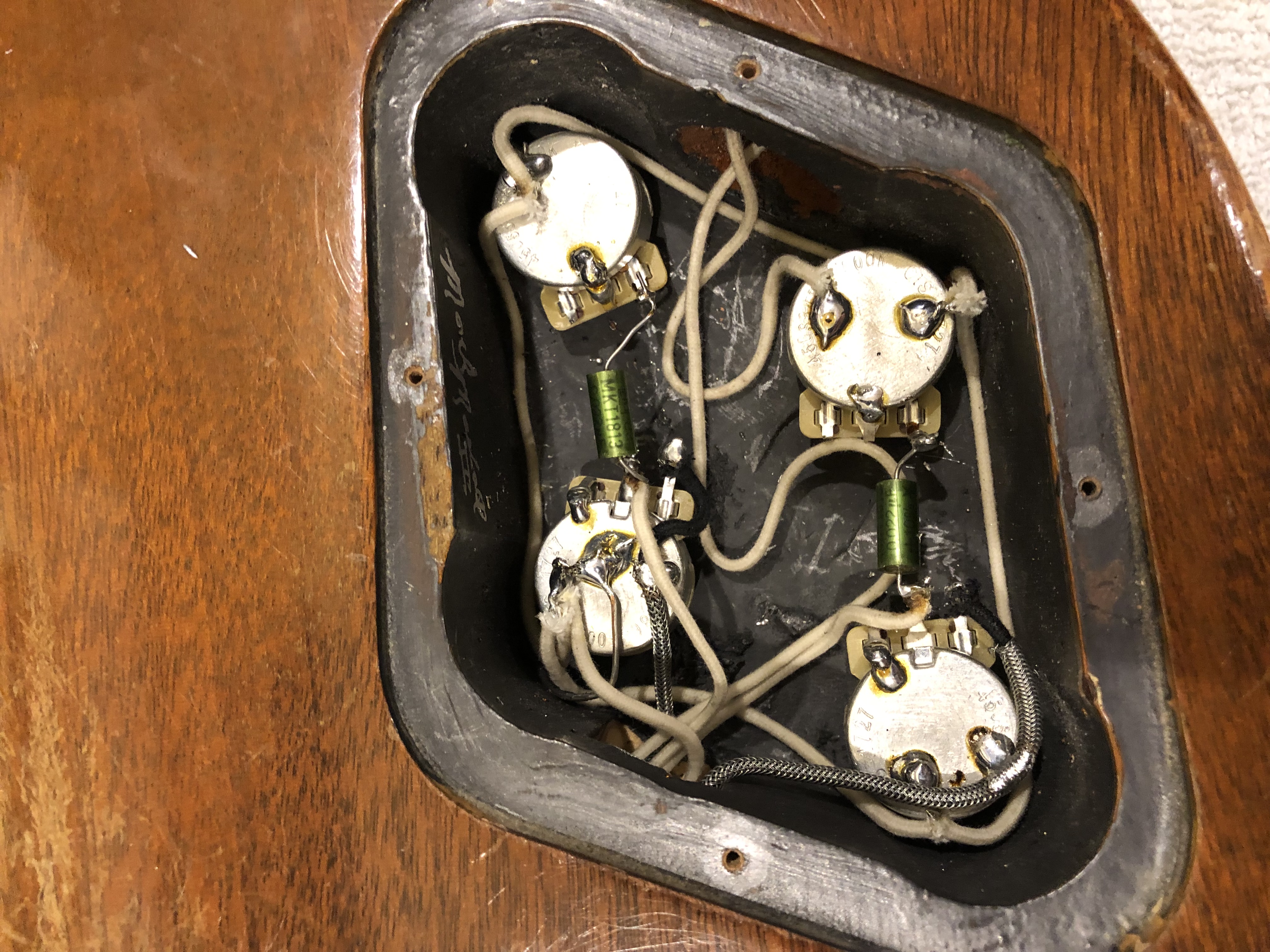
Speaker Breakup
An important ingredient to the ’60s Clapton tone is speaker breakup. It’s also the hardest thing to replicate in spaces where you can’t dime an amp. It takes a lot of volume to get most speakers to break up that way. More volume than a lot of home recording environments allow.
You can detect a fuzzy character in some of the Cream recordings. I attribute this fuzz to speaker breakup. Basically, it’s the speakers complaining about being punished by 100 watts blaring out of them. You can use an amp attenuator to push the power tubes and the preamp, but you’ll still be short on that last, subtle ingredient.
To reintroduce a hint of that flavor, I’ve experimented with using a tube preamp after the mic and overdriving it a little. It’s also possible we’re hearing a little mic preamp overdrive. After all, that was a lot of volume hitting the mic and preamp.
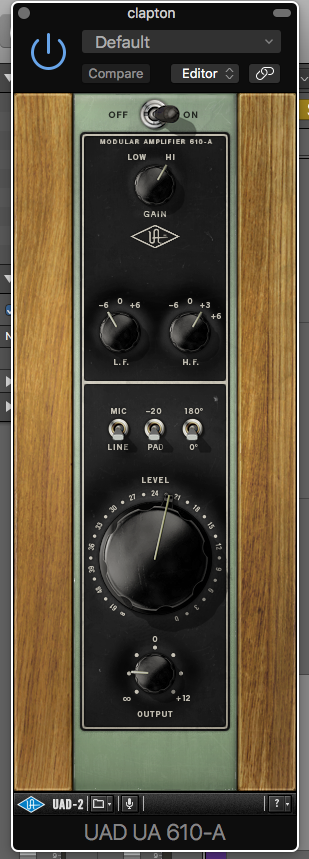
Let’s listen to some examples. I used a 1990 Les Paul Standard (with ’50s wiring) in a ZVEX Nano Head. It’s a 1-watt tube head, which is great for volume-limited environments. I ran this into a closed-back cab loaded with Celestion Greenback 25W 12” speakers.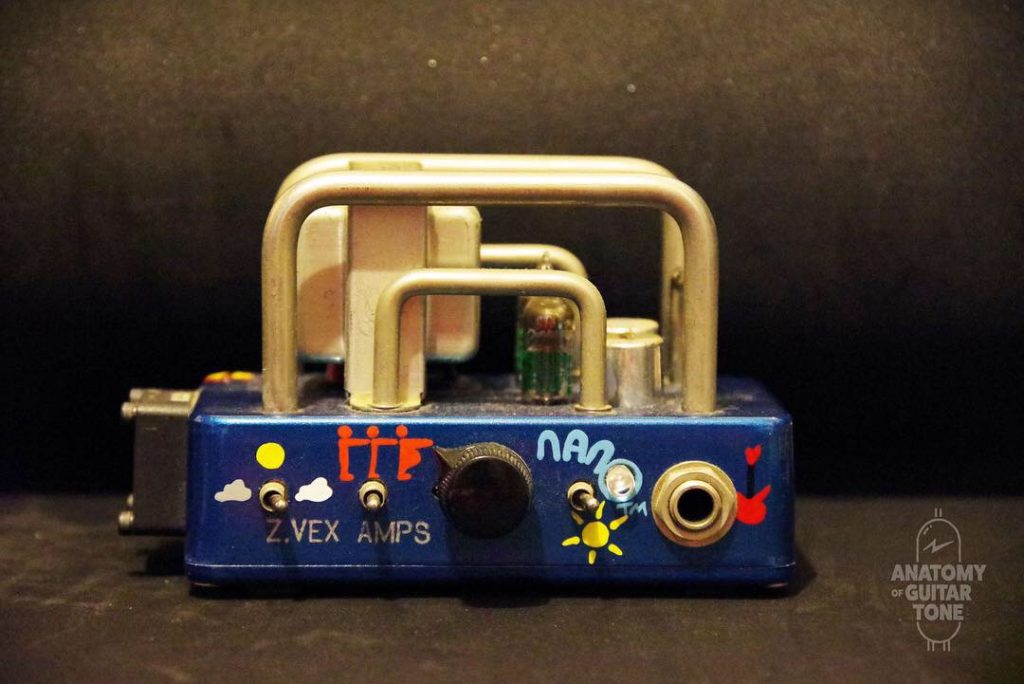 I miked the cab with an AEA A840 ribbon mic into a UAD Apollo using a Helios channel strip. The only other plugin I used was the UAD Studer A800 tape machine.
I miked the cab with an AEA A840 ribbon mic into a UAD Apollo using a Helios channel strip. The only other plugin I used was the UAD Studer A800 tape machine.
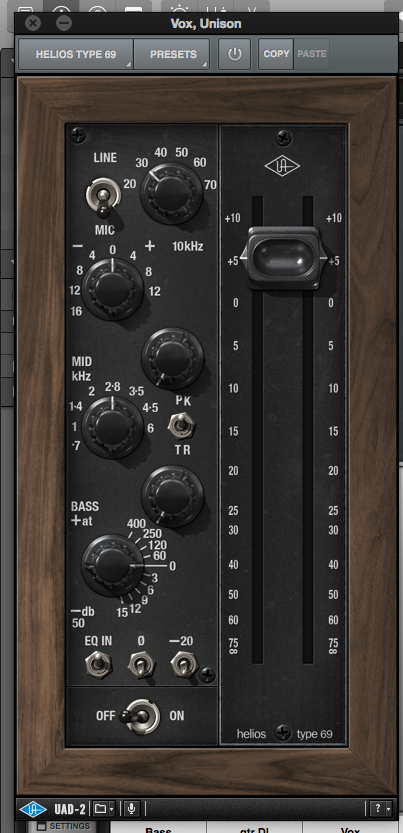
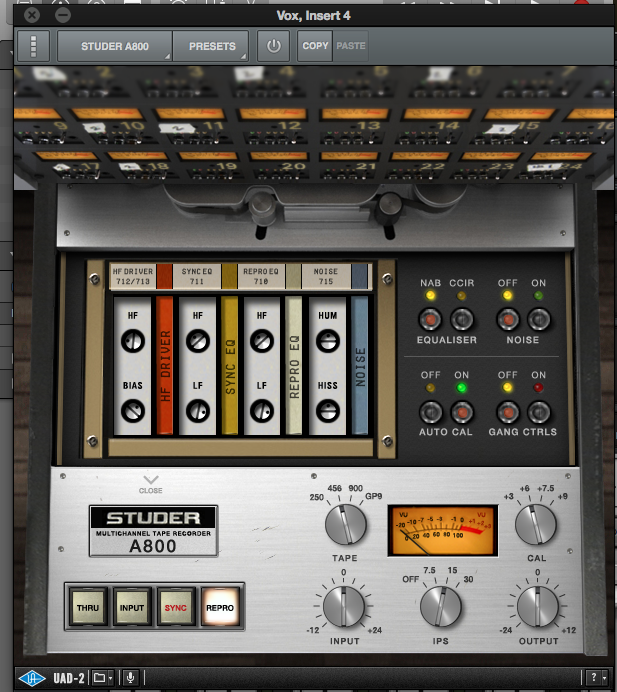
Later on, I added some UAD Fairchild 670 compression. It’s the perfect compressor for ’60s guitar tones.
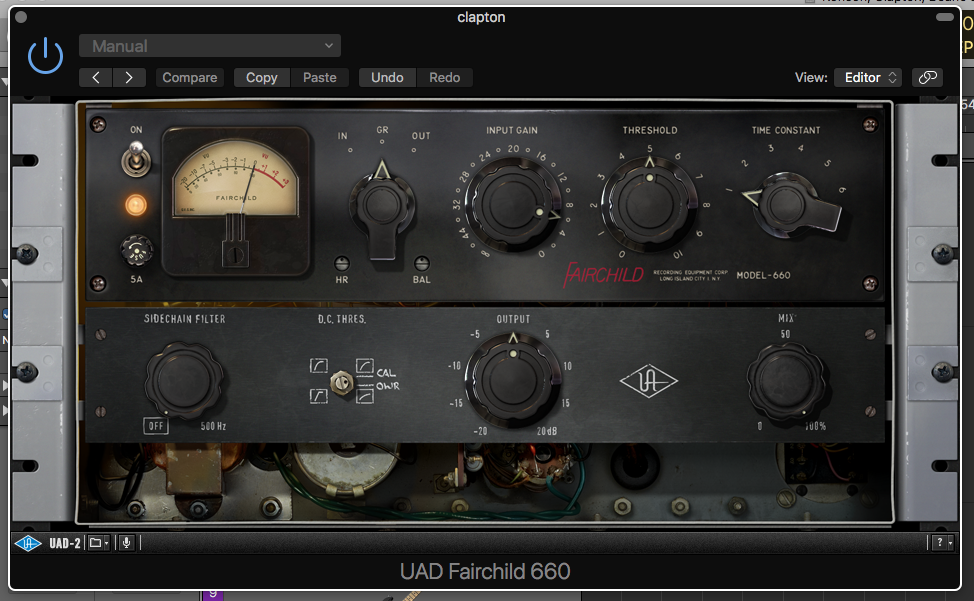
Bluesbreakers
Part of the sound of this Clapton era is room tone. It has been said that Clapton didn’t want his amp close-miked and that he preferred the tone of the amp in the room. This hasn’t been confirmed, but it makes sense since most of his favorite blues records had a very roomy guitar tone. This isn’t practical for many of us. We all don’t have great-sounding rooms — so we have to finesse it.
Luckily, there are some great room reverb plugins that will allow you to reamp the source. UAD Ocean Way is my favorite, and Logic includes a free Space Designer plugin.
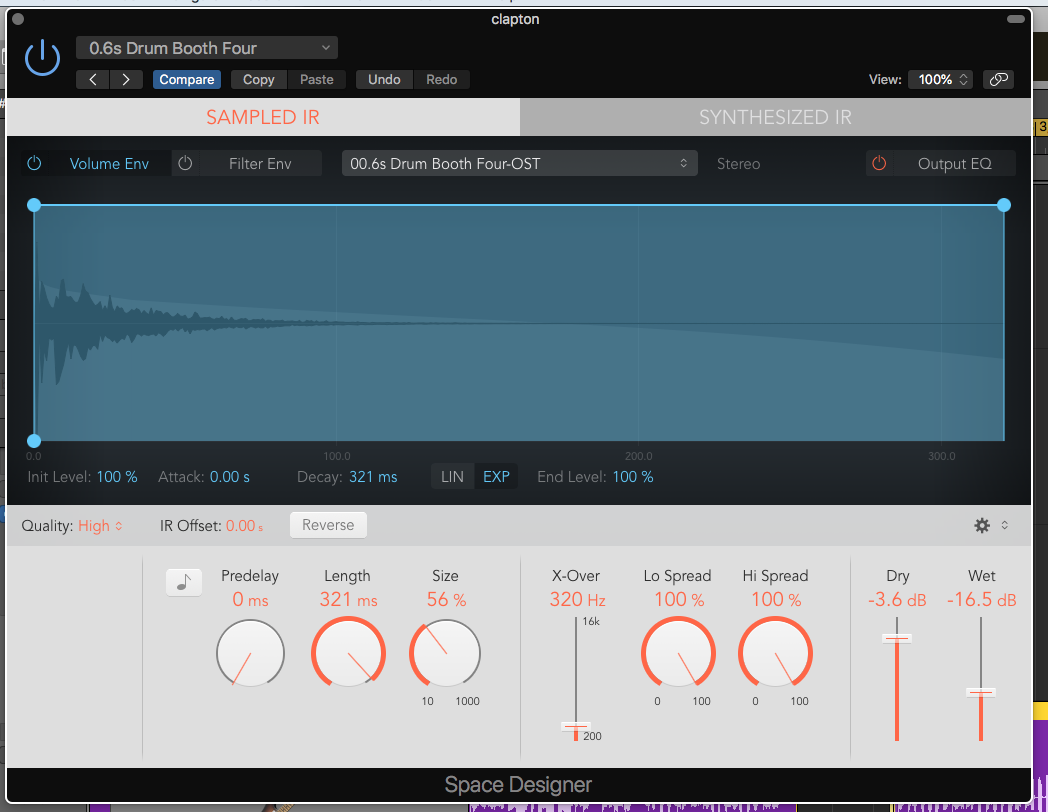
Example 1: Close-miked guitar cab.
Example 2: Close-miked guitar cab + Space Designer to get somewhat close to the Beano vibe.
Example 3: No Space Designer. Just close-miked guitar cab.
Example 4: Space Designer only (100% wet). No close mic blended in.
Cream Era
Even when Clapton was with Cream, I would venture to say that his guitar cab wasn’t close-miked as some believe. I think the low-end roll is partly due to mic placement and EQ. I definitely don’t think the mic is right up in the guitar cab’s grill. We can also start to hear the difference between the open-back cab on the Beano record and the closed-back cab on the Cream records. The same thing applies to the tone knob. Roll it back, but not all the way.
Let’s listen to a few examples that were inspired by the “Strange Brew” tone.
Example 5: Bridge pickup without 610 preamp
Example 6: Bridge pickup with the 610 preamp
I’m using the same exact guitar rig as I used in the Bluesbreakers examples. We’re trying to imply these tones — to infuse a little of the character. It’s impossible to perfectly recreate it. In these examples, I also used a UAD 610 preamp to add some preamp distortion. This was to get a bit of that speaker breakup.
Example 7: Neck pickup without the 610 preamp
Example 8: Neck pickup with the 610 preamp
Strings
One last thing worth mentioning. Using pure nickel strings can also help direct us to this tone. Even though you see the word “nickel” on a lot of strings, they’re often not pure nickel. Pure nickel, such as the DR Pure Blues, have a more rounded sound. They’re not as metallic sounding or as bright as nickel-plated or chrome strings. Pure nickel delivers a nice warm and balanced sound. This should get you started on your journey to ’60s-era Clapton tones. Now the hard part — practice!




